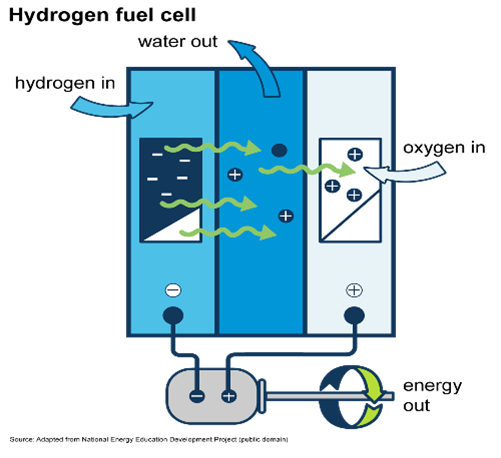Thursday, 14th October 2021
Indian Space Association
In New
Recently, Indian Space Association (ISpA) was launched by the Prime Minister of India.
About the News
- Aim: ISpA aims to contribute to the Government of India’s vision of making India Atmanirbhar and a global leader in the space arena, which is fast emerging as the next growth frontier for mankind.
- Functions of ISpA: The association will engage with stakeholders across the ecosystem for the formulation of an enabling policy framework that fulfils the Government’s vision.
- ISpA will also work towards building global linkages for the Indian space industry to bring in critical technology and investments into the country to create more high skill jobs.
- Members: ISRO is also an ISpA member.
- Its founding members include Bharti Airtel, Larson & Toubro, Nelco (Tata Group), OneWeb, Mapmyindia, Walchandnagar Industries and Alpha Design Technologies. Other core members include Godrej, Hughes India, Ananth Technology Limited, Azista-BST Aerospace Private Limited, BEL, Centum Electronics, Maxar India.
- Significance: According to Indian Space Research Organisation (ISRO) India accounts for only about 2% of the space economy with a potential to capture 9% of the global market share by 2030.
- ISpA is an association of space and satellite companies that aims to promote aerospace and space technologies and making India self-reliant and a global service provider.
- Function of ISpA: It will engage with stakeholders across the space economy and lobby with the government for enabling legislation, and for policies that promote activity in space-related sectors.
Areas where ISpA could make a difference
- Primary Areas:
- ISpA could help develop the capacity to design, build and launch larger satellites concept to work evenly across the nation.
- Domestic material sciences industry would find spinoffs as new materials developed for space vehicles need to be lightweight, while also being capable of surviving extremes of temperature and radiation. For example, Teflon was developed for heat shields and space suits.
- Solar energy research would get a boost, since solar power is a must.
- Development of New technologies:
- Helps domestic healthcare industry: Experience of the NASA and Roscosmos show that the technologies developed to put humans into space helped them better understanding of biology in unusual environments with variable gravity, high radiation, etc, and developed portable MRI scanners, compact lightweight exercise equipment, and remote medical diagnostics software.
- Circular Economy: Experience of reprocess organic waste products (urine, faeces, carbon dioxide) will lead to better designs for adult diapers, more efficient toilets and water-recycling technologies.
- New Goals such as space mining and tourism, establishing colonies or stations on the Moon, on Mars, and factories at Lagrange Points would require developing technologies, including autonomous robots, better engines, self-contained habitats, etc.
Sources:
High metal concentration in Delhi air
In News
A study by The Energy and Resources Institute (TERI), Delhi has revealed high concentration of heavy metals in Delhi’s air.
Details of the Study
- Areas covered: The study was carried out in six cities with different air pollution ecologies— Delhi (megacity), Ludhiana (high industrial activities), Patiala (high agricultural and biomass burning), Panchkula (PM 2.5 attained city), Vishakhapatnam (coastal region) and Jaisalmer (desert).
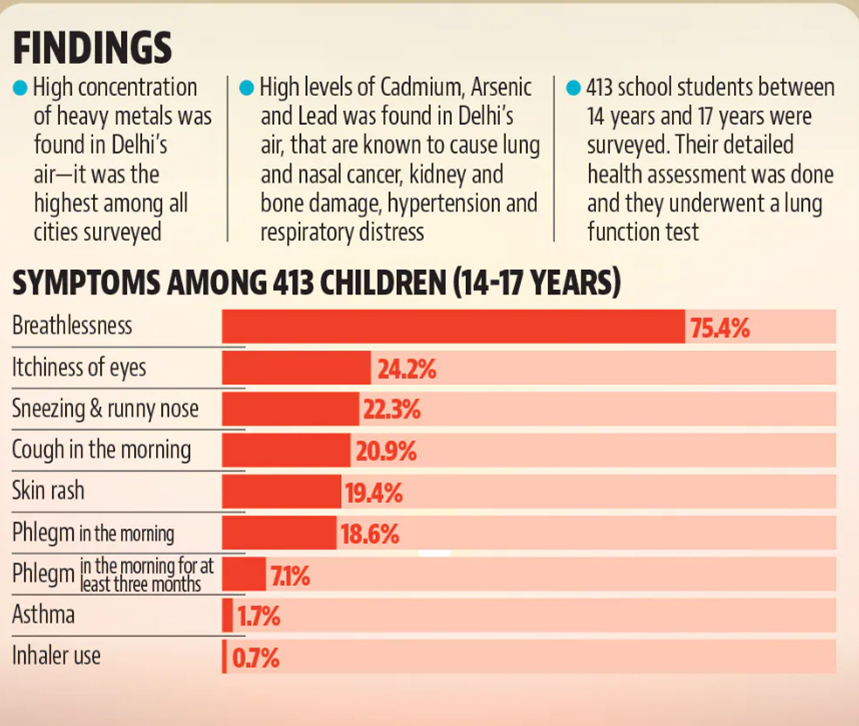
- Metals found: The study showed that with the onset of winter, as Delhi’s Pollution worsens, the concentration of metals increase. (The acceptable standard of PM 2.5 levels should be under 60ug/m3).
- The metals that have been found are: Zinc, Lead, Arsenic and Cadmium
- Sources of metals:
- Vehicular exhaust,
- Open fires, and
- Fumes from industrial operations in neighboring states
- Reason for Metal content: High traffic volume in Delhi and industrial activities in areas surrounding it led to an increased share of heavy metals in the air.
- Impact
- Higher risk of Diseases: Increased concentration of cadmium and arsenic can overtime result in higher risk of cancer, kidney issues, hypertension, diabetes, and cardiovascular diseases.
- On Children: Exposed to a range of respiratory and cardiovascular diseases
Source:
UN summit to tackle 'unprecedented' biodiversity threats
In News
The 15th session of the Conference of Parties (COP15) of the UN Convention on Biological Diversity (UNCBD) tasked with reversing the destruction of nature is officially set to kick off in Kunming, China.
Focus of the Summit
- Planet’s Health: COP 15 will deal with issues that are vital to the health of the planet, such as fighting pollution, protecting ecosystems and preventing mass extinction.
- Grounded on CBD: It is grounded in the Convention on Biological Diversity (CBD).
- 21 Targets for 2030: The negotiation provisionally sets 21 targets for 2030 that include:
- “30 by 30” Plan: According protected status to 30 percent of lands and oceans, a measure supported by a broad coalition of nations, including France and Costa Rica.
- Fertilizers: Halve the use of fertilizers so that less of the nitrogen-rich substance leaches into fresh and ocean waters
- Pesticides: Reduce pesticide use by at least two thirds
- Plastics: Halting the discharge of plastic waste entirely and
- Have subsidies for environmentally harmful industries reduced by at least $500 billion per year.
- China’s Role as the host: As the world’s biggest polluter, Beijing has the task of carrying this mission to boost biodiversity protection and rescue a weak environment that has resulted from its historical and current levels of pollution.

Are COP15 and COP26 linked?
- Negotiations under the two conventions unfold on separate tracks and do not intersect. But parties to both treaties are increasingly looking for overlapping solutions.
- The two bodies overlook two intertwined crises that need to be addressed together.
- Healthy ecosystems -- especially forest and oceans -- make better carbon sinks to absorb CO2 pollution.
- These in turn are vital to keep global warming down to levels that are survivable for humanity and other species.
What is Convention on Biological Diversity (CBD)?
- About: The CBD was drafted in 1992 at the Earth Summit in Rio. Its stated goals are to preserve the diversity of species on Earth and set guidelines on how to exploit natural resources sustainably and justly.
- Ratification: It is a treaty ratified by 195 countries and the European Union. The US has not ratified the treaty and India became a signatory to the Convention in 1994.
- Need for CBD: Plants and animals are disappearing at an accelerating rate due to human activity -- habitat encroachment, over-exploitation, pollution, the spread of invasive species and, more recently, climate change. About one million animal and plant species out of 8.1 million are threatened with extinction -- more than ever before in human history.
Source:
Image Source:
Gati Shakti National Master Plan
In News
The government has launched the Gati Shakti National Master Plan
What is the Gati Shakti National Master Plan?
- About: It is a ₹ 100 lakh crore national master plan for multi-modal connectivity that aims to develop infrastructure to reduce logistic costs and boost the economy.
- The ambitious plan envisages a centralised portal to unite the infrastructural initiatives planned and initiated by as many as 16 central ministries and departments
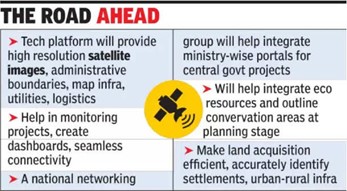
- Objectives of the Plan: The PM Gati Shakti plan is a campaign to lend more speed (Gati) and power (Shakti) to projects by connecting all concerned departments on one platform.
- It will break inter-ministerial silos and integrate the planning and designing of projects with a common and holistic vision, enhance India's global competitiveness through next-generation infrastructure and seamless multi-modal connectivity, ensure seamless movement of goods and people and enhance the ease of living as well as the ease of doing business.
- Need for the Plan: Due to the wide gap between macro planning and micro implementation, problems of lack of coordination, lack of advance information, thinking and working in silos were leading to hampered construction and wastage of budget.
- Example: There is a new good quality road constructed by one department, and a few days later another department digs that very road to lay water pipelines. Such lack of coordination needs to end.
Targets under Gati Shakti
The national master plan fixes targets up to 2024-25 for all infrastructure ministries.

The six pillars of ‘PM GatiShakti - National Master Plan’


What can be the Potential benefits of the Plan?
- Economic Development: The plan is an important part of the ‘Aatmanirbhar Bharat’ (self-dependent India) vision and ambitiously aims to lend more power and speed to projects under the $1.5-trillion National Infrastructure Pipeline and boost the goal of achieving a $5-trillion economy, especially in wake of the recent economic impacts of the coronavirus disease (Covid-19) pandemic.
- Benefits for the MSME Sector: With 11 industrial and two defence corridors, this scheme will hugely benefit our MSME sector in becoming a part of high-speed growth of our economy.
- It will create multiple employment opportunities through streamlining of projects.
- Inclusive Development: This scheme will not only ensure a widespread reach of basic amenities to the remotest areas of our country but will also significantly enhance business opportunities for inclusive growth.
- Efficiency of Projects: With more visibility and availability of information and data on a real-time basis, there will be efficient implementation of infrastructure projects, less information asymmetry between ministries, reduction in working in silos as well as fewer delays due to lack of coordination between various government agencies
- Business and Investor Synergy: PM Gati Shakti will provide the public and business community information regarding the upcoming connectivity projects, other business hubs, industrial areas and surrounding environment. This will enable the investors to plan their businesses at suitable locations leading to enhanced synergies.
- Global Competitiveness: It will improve the global competitiveness of local products by cutting down the logistics costs and improving the supply chains, and also ensure proper linkages for local industry & consumers.
Way Forward
- Implementation Modes: Since the mode of implementation has yet not been defined, the Plan can be implemented through various modes like PPP, totally Private mode or entirely under Public Sector.
- Clarity of Risk Uptake: There is need to clarify as who will bear the risk of the programme. The upstream and downstream risk related to the plan need to be differentiated and allocated.
- Package for Monetization: There is need for developing a package to effectively monetize this plan, so that the load on the central resources can be reduced.
Question: Discuss the six pillars of the Gati Shakti Master Plan.
Sources:
- Gati Shakti: Modi launches 100-lakh crore national master plan for multi-modal connectivity, details here
- Prime Minister to launch PM GatiShakti on 13th October
- PM Narendra Modi to unveil Gati Shakti master plan next week
- Prime Minister Narendra Modi to launch PM Gati Shakti National Master Plan today
This Day in History - BR Amedkar quit Hindusim
On 14 October 1956, Dr BR Ambedkar, the architect of the Indian Constitution decided to quit Hinduism and take up Buddhism, along with close to 3,65,000 of his followers at Deekshabhoomi in Nagpur. In May, 1936 Ambedkar addressed a huge gathering of Mahars in Mumbai, where he declared his ideas on conversion, and why he considered it to be the best route towards emancipation. He spent the next 20 years contemplating on which religion would suit his requirements best. He dismissed the idea of converting to Islam or Christianity, because of the foreignness attached to them. However, he chose Buddhism after a long-drawn-out process of contemplation on the religion, and in fact came out with his own version of the Buddhist Dhamma, where he modified those aspects of Buddhism which he considered as not aligning with the overall rationality, inherent of the religion. This new school of Buddhism was called Navayana (the new vehicle). In 2001, a large stupa was unveiled at Deekhabhoomi to commemorate the occasion.
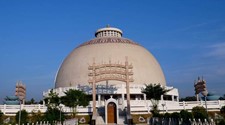
Source:
Image of the Day - Mysterious Signals from Milky Way Galaxy's Centre
This is simulated image of mysterious Signals from Milky Way Galaxy's Centre. Astronomers have discovered unusual signals coming from the direction of the Milky Way’s centre. The signal has a very high polarisation. This means its light oscillates in only one direction, but that direction rotates with time. The brightness of the object also varies dramatically, and the signal switches on and off apparently at random. The radio waves fit no currently understood pattern of variable radio waves, like the signals from stars like pulsars, supernovae, flaring stars, and fast radio burst. This could suggest a new class of stellar objects. The discovery was made with ASKAP (Australian Square Kilometre Array Pathfinder Telescope) under a project called the Variables and Slow Transients (VAST) survey. Hence, the new and, as yet, unidentified object has been named ASKAP J173608.2-321635.

Source:
'MyPortApp'
- Context: Union Minister for Ports, Shipping and Waterways has launched 'MyPortApp' recently.
- It is a mobile application that aims to promote transparency and simple access to port-related information.
- The app is aimed at users who want to make use of various port services and can be accessed anywhere 24x7.
- It includes all port details digitally and monitors operations virtually. It provides all port related facts such as vessel berthing, rake & indent, rake receipt, container status, tariff, bills, port holidays, etc.

Sources:
- Shipping Min Sonowal Launches ' MyPortApp ' In Kolkata to Digitally Monitor Port Operations
- Shipping Min Sonowal Launches 'MyPortApp' In Kolkata to Digitally Monitor Port Operations
Image Source:
Hybrid Seed Mini Kits: Distribution Program
- Context: Under a special program by the Union Ministry of Agriculture 8.20 lakh seed mini-kits are planned to be distributed free of cost in 343 districts of 15 states.
- This program will increase production and productivity by increasing the seed replacement rate, which will help in increasing the income of the farmers.
- It has been started under the National Food Security Mission (NFSM) - Oil Seed and Oil Palm Scheme.
- It covers various districts of all the major producing states like Madhya Pradesh, Bihar, Haryana, Jammu & Kashmir, Punjab, Rajasthan, Uttarakhand, Assam, Arunachal Pradesh, Tripura etc.
- The objective of this Seed Mini Kit program is to polarize new varieties with high yield potential and other useful features.
Sources:
- Free 8.20 lakh hybrid seed mini kits will be distributed to farmers in 343 districts of 15 states
- Free 8.20 lakh hybrid seed mini kits will be distributed to farmers in 343 districts of 15 states
Image Source:
Sagarika, Nano Zinc and Nano Copper
- Context: Sagarika, Nano Zinc and Nano Copper have been introduced by the Indian Farmers Fertilizer Cooperative Limited (IFFCO) to reduce farmers’ expenses on fertilizers by half.
- Sagarika a seaweed extract (28% w/w) based growth promoting product is derived from the sap of red & brown algae. It works as a metabolic bio enhancer, stimulates internal growth and development processes in plants. It contains inherent nutrients, vitamins, plant growth hormones like auxin, cytokinin, gibberellins, betaines, mannitol etc. It is available in Liquid and Granular form for application in different crops as soil, root treatment, drip and foliar application etc.
- Nano zinc is developed as an alternative to the currently used Zinc fertilizers and only 10 gm of this product would be sufficient for a hectare of land.
- Nano Copper boosts the plants immunity against harmful pathogens and helps increase the activity of plant growth hormone.
- These Nano-products include reduction in the requirement of conventional chemical fertilizer by 50%; upto 15-30% increase in crop production; improvement in soil health; reduction in the emission of greenhouse gases.

Source:
Image Source:
‘Best Tourism Village’
- Context: Three Indian villages have been nominated for UNWTO’s ‘Best Tourism Village’.
- Madhya Pradesh's Ladpura Khas village, Meghalaya's Kongthong village, and Telangana's Pochampally are the villages that have been nominated.
- Ladpura Khas village is located in Tikamgarh district in Madhya Pradesh. It is famous for its palaces and temples built in the 16th and 17th centuries.
- Kongthong village is also known as 'Whistling village' as in this village, a mother calls her child by a tune instead of a name, like Eeooow, Ooeeo, etc. These musical names are called ‘jingrwai Iawbei.’ The villagers here have two names-a regular name and a song name. The song names have two versions, a short song (used at home) and a long song (used in the forest to keep away evil spirits).
- Bhoodan Pochampally village located in Yadadri Bhuvanagiri district of Telangana is popular for its weaves, especially handwoven ikkat saris. It is known for its famous Bhoodan movement, which saw rich landowners voluntarily gift a percentage of their lands to the landless.
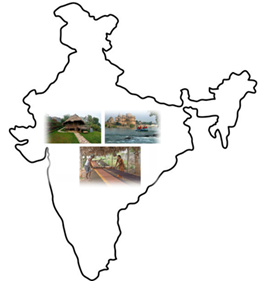
Sources:
- Three Indian villages nominated for UNWTO’s ‘Best Tourism Village’; Details here
- Three Indian destinations in line for UNWTO’s ‘Best Tourism Village’; know about them here
Image Sources:
Bombay High Court POSH guidelines risk silencing victims of sexual harassment: IE
Essence: Recently, the Bombay High Court prohibited the disclosure of the identities of the victim accused and witnesses, of those involved in POSH (prevention of sexual harassment) to avoid reasonable expectation of retaliation at the workplace. As physical presence of person will cause further delays in an already slow judicial system. Apart from this, it also discourages victims from pursuing trials that require them to travel appear in person for every court hearing. This blanket ban, including the identity of those found guilty, is in against the need for transparency and accountability in the judicial process. Besides, this may result in habitual offenders hiding behind this veil of confidentiality and prevent the public from learning about the actions of powerful employers accused of protecting perpetrators. The reality of sexual harassment is that it goes unnoticed and unspoken about in a majority of cases. A court judgment like this could in effect lead to the silencing of many such future voices, without doing anything much to prevent future sexual harassment.
Why should you read this article?
- To understand the reason(s) behind the recent judgement of the Bombay High court on prohibition of the disclosure of the identities of the victim accused and witnesses, of those involved in POSH.
- To understand challenges associated with such blanket bans.
Source:
Sowing better to eat better: TH
Essence: The article talks about the findings of the Fifth National Family Health Survey. The finding indicates deterioration in the nutrition related indicators and how India should work on it by changing its production pattern. Addressing the complex problem of malnutrition would require a multi-pronged approach which would include adoption of new technologies.
The agri food system needs long term reorientation in order to provide better access to safe and nutritious food along with minimising the cost on the environment and climate. A sustainable agri-food system is one in which a variety of sufficient, nutritious and safe foods are made available at an affordable price to everyone, and nobody goes hungry or suffers from any form of malnutrition.
Why you should read this article
- To understand the complex problems associated with Agri food system.
- To understand the steps that India should take in its agri-food system to address malnutrition.
Source:
The global war on terror grinds along: TH
Essence: The article discusses the 9/11 attacks on the USA and the succeeding global war on terrorism. Osama bin Laden’s aims to destroy the ‘myth of American invincibility’ failed. Two decades of the Global war on terror did not, however, eradicate terrorism. Giving reference of the capture of Afghanistan by Taliban, the article reflects the new variants of terrorism. The emerging shape of terror and terror attacks during coming periods is likely to be very different from what many of today’s experts possibly anticipate. The reality is that the limits of human imagination have become the virtual parameters of terror threats today.
Why you should read this article
- To understand the emerging trends in terrorism
- To know the capabilities that need to be developed to cope with new wave od terrorism
Source:
Organic Farming: A Better Alternative
Background
- Organic farming is considered as non-profiteering and more laborious input has seen the light of the day.
- Maruthi Naidu is a third-generation farmer from Andhra Pradesh has started earning lakhs a year now, after shifting to organic farming,
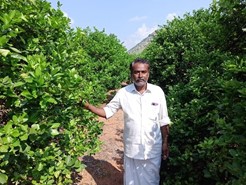
How Organic Farming became a way of farming?
- Eye-opener: Chemical inputs increased the yield in the initial years, but deteriorated the health of the soil.
- Challenges: Difficult in procuring natural inputs and extracts for the process.
- Innovations: Use of Zero Budget Natural Farming (ZBNF) as an innovation addressed the issue of soil health.
- Breaking the myth: As most of the farmers believed chemical farming techniques yield better output, but broke the myth by starting the ZBNF.
- Inspiration: Farmers of neighbouring areas inspired by Maruthi Naidu started to invest in organic farming
Quote:
“Innovation is taking two things that exist and putting them together in a new way.”-Tom Freston
Source:
Share the article
Get Latest Updates on Offers, Event dates, and free Mentorship sessions.

Get in touch with our Expert Academic Counsellors 👋
FAQs
UPSC Daily Current Affairs focuses on learning current events on a daily basis. An aspirant needs to study regular and updated information about current events, news, and relevant topics that are important for UPSC aspirants. It covers national and international affairs, government policies, socio-economic issues, science and technology advancements, and more.
UPSC Daily Current Affairs provides aspirants with a concise and comprehensive overview of the latest happenings and developments across various fields. It helps aspirants stay updated with current affairs and provides them with valuable insights and analysis, which are essential for answering questions in the UPSC examinations. It enhances their knowledge, analytical skills, and ability to connect current affairs with the UPSC syllabus.
UPSC Daily Current Affairs covers a wide range of topics, including politics, economics, science and technology, environment, social issues, governance, international relations, and more. It offers news summaries, in-depth analyses, editorials, opinion pieces, and relevant study materials. It also provides practice questions and quizzes to help aspirants test their understanding of current affairs.
Edukemy's UPSC Daily Current Affairs can be accessed through:
- UPSC Daily Current Affairs can be accessed through Current Affairs tab at the top of the Main Page of Edukemy.
- Edukemy Mobile app: The Daily Current Affairs can also be access through Edukemy Mobile App.
- Social media: Follow Edukemy’s official social media accounts or pages that provide UPSC Daily Current Affairs updates, including Facebook, Twitter, or Telegram channels.




